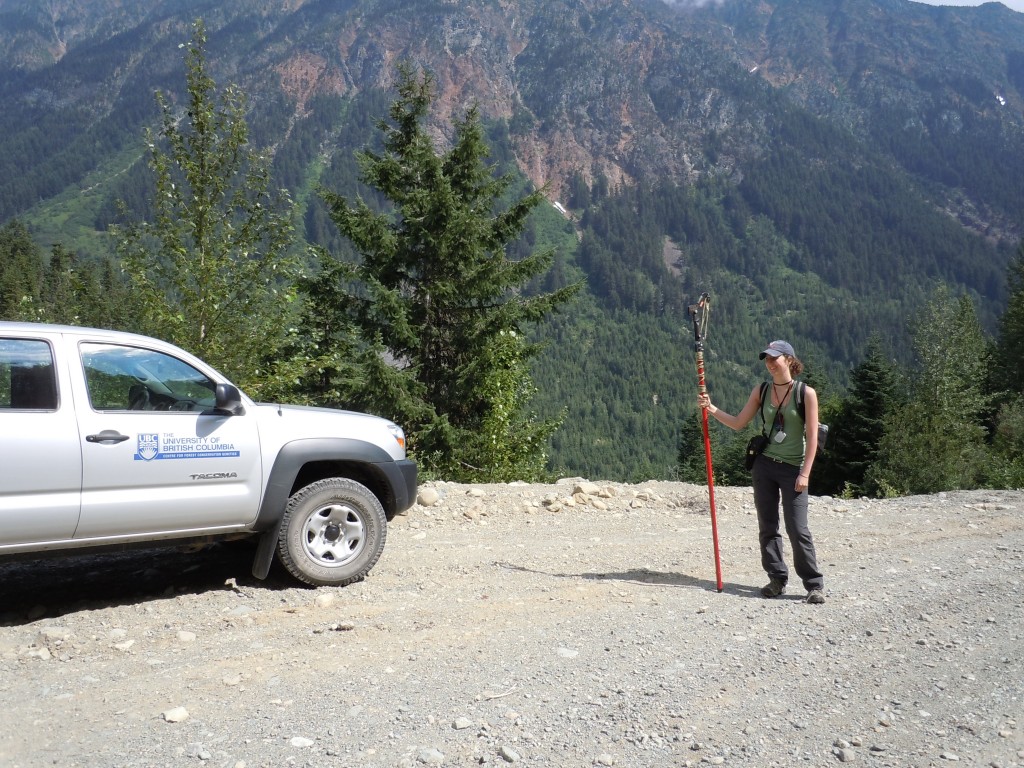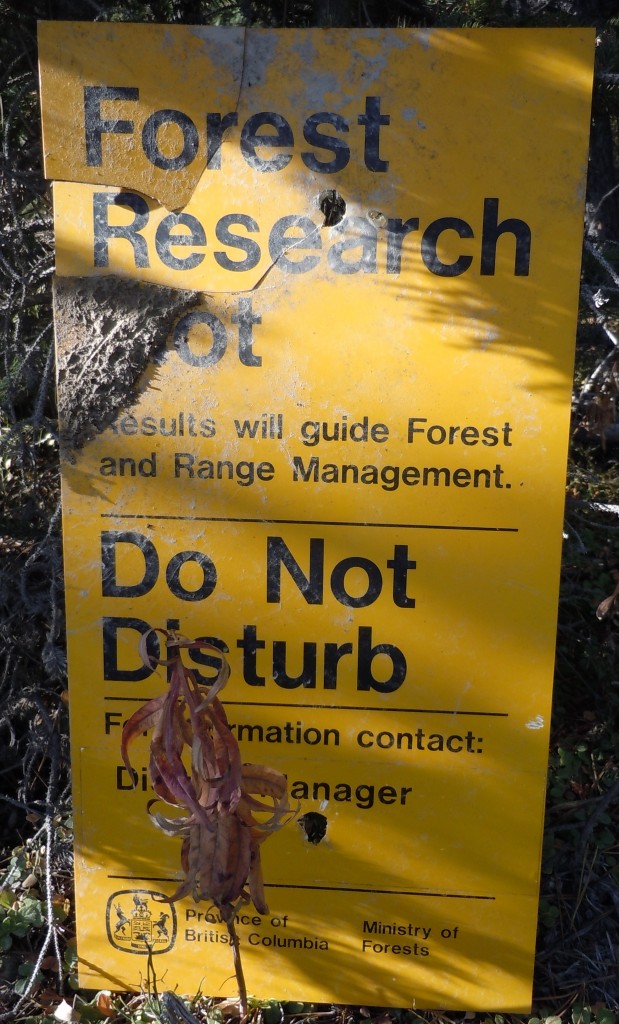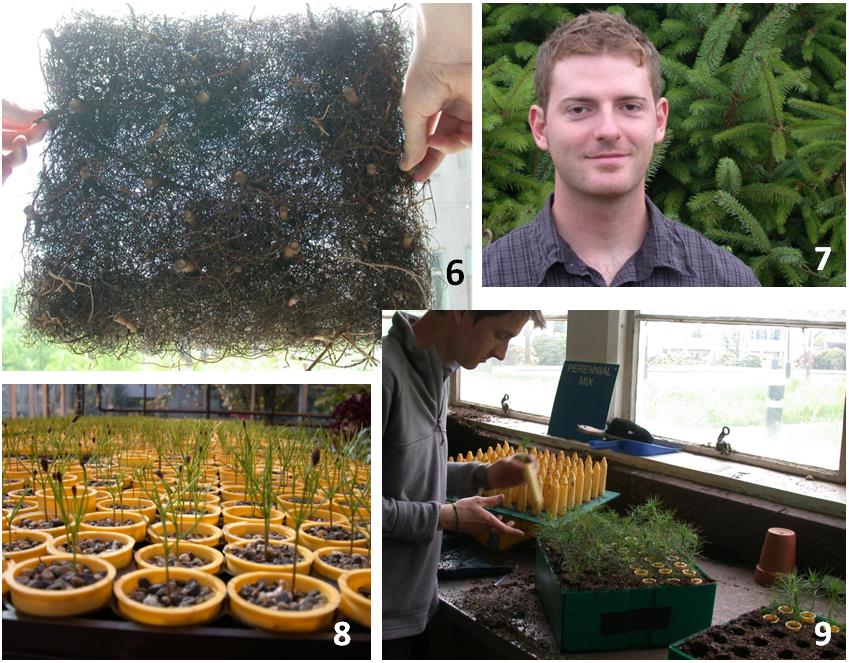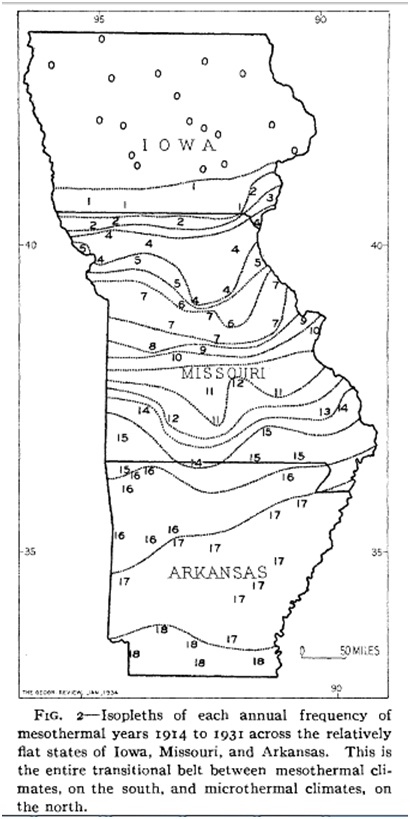Trees on the Move? Debating Assisted Migration in Climate Change Mitigation
A nice summary of different kinds of assisted migration and associated risks by Sarah Bisbing.
A nice summary of different kinds of assisted migration and associated risks by Sarah Bisbing.
After completing the first year of my PhD studies here at UBC and having developed a good general idea of the projects I hoped to pursue, I embarked last summer on several forays out of the office, out of the lab, and out of the city to do some field work!
I am a grad student in the zoology department working with Mike Whitlock, and one of my thesis projects will be looking at adaptation in the lodgepole pine (Pinus contorta), a focal species in the AdapTree project. My background now being stated, I will reveal that before starting this project I knew next to nothing about trees. I will admit that I used to call any type of evergreen tree a “pine tree”, and thankfully have since been corrected into saying “conifer”. My preliminary field work thus proved to be extremely educational in terms of my specific project goals, my exposure to field work in BC (I am from the east coast of the US, which is where the bulk of my previous field work experience accrued), my knowledge of trees, and my personal growth as a researcher. I have many people to thank along the way for this, especially those who were willing to go into the field with me to help out when I had nothing in return to offer except some beautiful scenery, fresh air, exercise, and trees. Lots of trees.
I began my first trip to the woods with a lot of planning. And I will admit that one of my favorite parts of doing scientific field work is the strange assortment of equipment any researcher needs.
I enlisted the help of two grad students from the Aitken lab: Ian, who has taught me nearly all of my conifer identification skills so that I can now proudly say I am a pro at IDing lodgepole pine, and Katha who was a visiting student from Spain and very experienced from her own field work with trees.
We headed three hours north of Vancouver, past the town of Pemberton in search of some trees to sample DNA, cores, and take some phenotypic and environmental measures. My first time being “in the middle of nowhere” in BC was quite the adventure. Upon arrival, I laid on the truck horn a bit to ward off the grizzlies that I was probably overly worried about being everywhere. We took in the beautiful view on a sunny day, latched on our bear spray, and were off!
 Fortunately, no grizzlies were encountered, but unfortunately, we trudged up a very dense and steep slope with only Douglas fir in sight. With no motivation lost however, we returned to the road to practice our data collection skills on some roadside lodgepole we’d passed on the way up. Coring trees proved to be the favorite activity and measuring local density the least favorite. Though we may not have accomplished the most efficient and worthwhile sampling trip, this first outing proved vital in getting a real feel for how time-consuming different methods were, which data seemed most worthwhile, and how feasible my then-thought-out sampling scheme was. I returned to Vancouver with confidence in the skills needed to both find my species and collect the necessary data from trees.
Fortunately, no grizzlies were encountered, but unfortunately, we trudged up a very dense and steep slope with only Douglas fir in sight. With no motivation lost however, we returned to the road to practice our data collection skills on some roadside lodgepole we’d passed on the way up. Coring trees proved to be the favorite activity and measuring local density the least favorite. Though we may not have accomplished the most efficient and worthwhile sampling trip, this first outing proved vital in getting a real feel for how time-consuming different methods were, which data seemed most worthwhile, and how feasible my then-thought-out sampling scheme was. I returned to Vancouver with confidence in the skills needed to both find my species and collect the necessary data from trees.
It was thus time for field trip number 2. My labmate Katie volunteered to help out with her willing husband and dog for a trip to the interior of BC, a first for all four of us! We headed east of Hope, up the Coquihalla highway where we found lodgepole a-plenty, along with Mountain pine beetle damage and death abounding. We had two extremely successful days of sampling, covering two nice elevational transects in what we found to be a beautiful area for wandering around in the woods. My driving skills were also significantly improved on some little-used logging roads. I am no stranger to 4-wheel-drive on unsteady terrain, but it took a little bit of adjusting to get used to this when on a narrow road with trenches every hundred yards or so as drainage, dense tree and brush cover right up against the truck on one side, and essentially a cliff on the other. I was surprised to learn what kinds of roads in BC merit indication on a map.
We returned with a truck full of pine cones, pine needles, tree cores, data sheets, GPS points, sappy fingers, a tired dog, and 3 slightly dehydrated people. All in all boding well for the future. My third foray to the field took us to a site even further into the interior of BC, just outside of Vernon. I had chosen an elevational transect along a road leading up to Silver Star Mountain, which proved to be more difficult sampling than foreseen. There was little public land here, being in a more developed area, a provincial park near the top of the mountain, and a resort at the very top. Yet we still managed the full transect and remained law-abiding citizens. One of my favorite parts of the day was actually talking to the resort staff, slowly finding my way through their chain of command to get permission to sample on the property. They turned out to be extremely helpful, letting me sample wherever I liked and providing me with a local map.
However, as grad students and advisors alike know, developing projects change, sometimes quite drastically. And after this third field trip, so did mine. A major realization from my field work to this point was that I was going to be very hard-pressed to find natural stands of lodgepole pine. Every tree I had sampled so far was within logging stands, and if I wanted naturally growing trees, I would need permits to sample in a park. As it turns out though, there is an invaluable resource available for the lodgepole pine, in the form of a long-term provenance trial established in the 1970’s: the Illingworth provenance trial. With the turns my research project was taking, this resource was the perfect tool.
This provenance trial contains trees collected from 169 provenances (or sources) across the range of lodgepole pine and planted out at 60 test sites across BC. Useful phenotypic data is already available for these trees, so the only thing lacking on my end was DNA samples! Summer was drawing to a close and classes had started, so there was time left for one last weekend of field work to visit an Illingworth test site and see if my plans for this data set were feasible. I again was fortunate to have labmates volunteer for help in the field, and was happy to give my theoretician friends a chance at true field work.
We embarked to seek out the closest test site to Vancouver,somewhat  southeast of Princeton, a site called Pettigrew Creek. I received copious preparatory help from Nick Ukrainetz, the lodgepole pine breeder for the BC Ministry of Forests, who provided detailed access notes and site maps. As one might expect however, nearly 40-year-old research plots are not as easy to find as they once were. We succeeded in finding one out of two blocks planted at this site after much driving and searching through the woods. At one point, I am entirely certain that we left the road to find the trial site, walked around and past it, and managed to return to the road entirely looping around the research plot. Luckily, on the second go-around, we spotted an old sign, half buried in the dirt, identifying that we were on the right track.
southeast of Princeton, a site called Pettigrew Creek. I received copious preparatory help from Nick Ukrainetz, the lodgepole pine breeder for the BC Ministry of Forests, who provided detailed access notes and site maps. As one might expect however, nearly 40-year-old research plots are not as easy to find as they once were. We succeeded in finding one out of two blocks planted at this site after much driving and searching through the woods. At one point, I am entirely certain that we left the road to find the trial site, walked around and past it, and managed to return to the road entirely looping around the research plot. Luckily, on the second go-around, we spotted an old sign, half buried in the dirt, identifying that we were on the right track.
We fanned out into the woods, and like finding buried treasure, spotted man-made posts, labelled trees, and painted signs. Eureka!
We spent the rest of the day successfully sampling tree heights, DBH’s, and collecting cones and needles for DNA samples. The highlight of this trip would definitely be the testing of a new method for collecting needles from trees with branches too high for the pruning poles to reach: slingshot. I had spent a good deal of time prior to this trip asking around different forestry labs how they collected DNA from very tall trees, and as I did not want to invest in either a rifle or an expensive, multi-telescoping pole, slingshot became the tool of choice. It proved somewhat time-consuming and dangerous to shoot nearly straight in the air, with pieces of gravel ricocheting off of branches and trickling back down to where we stood, but it was fun and we obtained every single DNA sample we sought which I call a success.
I found this summer of field work, despite some hitches, to be priceless. My advice to any beginning grad students out there seeking to do field work of their own is this. Definitely plan your own preliminary outings or tests. Something always goes wrong when working in the field, so you just need to be prepared. I do not feel as if any of my time in the field was wasted, and even if all of my samples will not end up being analyzed for my thesis, they also provide me with material to test my genetic methods on to ensure that no issues arise on that front. There is no amount of planning that can replace the actual experience of being in the field, because that is where you can learn the most about your system. And with the proper preparation and hands-on experience, when the time comes for the real work, your stress level will hopefully be much diminished knowing that you are capable of the task at hand. I now look forward to the coming summer knowing what I can expect to find for the most part.
Lastly, I want to end this post with a few last thoughts that struck me. It truly amazed me how much land there really is in BC, as well as how much logging. Hearing numbers and acres in my head was nothing at all like seeing an entire mountainside swept clear.
As opposed to the cow pastures and corn fields I am accustomed to, it is clear that the resource here is timber. It is also clear that BC has vast areas of unpopulated land, which was the strangest experience for me. Where I am from, you are hard-pressed to drive more than an hour without seeing a gas station or a rest stop or a town. Here, you can drive half a day or more and see no signs of habitation. BC is full of beautiful untamed areas, and I feel like my home state’s motto of “Wild and Wonderful” is just as fitting here.
On January 14, I felt like I was opening a Christmas present. The box concerned, Pine MAT1 box 1, contained 90 seedlings of Pinus contorta, grown in a controlled climate chamber (1) under a simulated climate corresponding to Mean Annual Temperature of 1 degree Centrigrade for two seasons (2).
Previous experiments have revealed that, when plants are sown directly into boxes, after two seasons it is neigh impossible to untangle the roots, even after all the soil is washed away. They make for an interesting art display (6), but that’s it. One season is fine; two is impossible.
When clearing space in the lab and encountering the dried but as yet unframed root art, I told this story to Connor (7). It was late summer of 2011. Connor quickly put two and two together: wouldn’t we be heading for a similar problem in our present experiment? Which fact I had somehow failed to realize, in the frenzy of obtaining seedlots, stratification, and the hundred other things that need attention. So we sowed the seeds into individual ‘stubby cells’ (8) for the first season, and then planted those in our boxes (9) before the second season. Quite the effort, and no guarantees.
So, the question was, would the roots in box 1 of Pine MAT1 come apart easily under the force of my spray hose, or not?
Yesterday was only the first box, and an easy one at that (smaller plants), but I am very pleased to report that, yes, they did come apart easily (35 minutes). And so a huge stone has been lifted from my heart and a number slotted into the column ‘estimated time to obtain dry mass data for 64 boxes’, which is quite a lovely Christmas present indeed.
Pia (10).
Do you ever get a brilliant idea, immediately followed by that nagging feeling of “someone must have already thought of this…”? In science, there is nothing worse than slaving away on a project and parading it in front of your peers, only to find out someone else did it better than you a few decades earlier. See Paul Vallett’s hilarious “science in reality” flow chart for an illustration of how this works. That nagging feeling can lead you to spend countless weeks reading obscure journals in search of the paper that scooped your precious revelation. In the scientific process, this paranoid frenzy is called the “literature review.”
If you’re very lucky, you find nothing; your genius is vindicated and your Nobel Prize awaits. If you’re like the rest of us, you will find a half dozen other scientists that pretty much did what you were going to do, except in their own fields. You accept your place as one of the pawns in the game of science and try to carve out your own mildly originally application of an old concept.
However, as you peruse some dark corner of the internet, you might find a grainy, scanned pdf of a paper written a century ago by some gentleman in tweeds who wrote manuscripts with pen and ink and actually got to do field work. It quaintly lays out everything you wanted to say, but hadn’t thought of yet. Perhaps it outlines a technique that was never taken up in its time, but is perfect for your project. This is the coveted Seminal Paper. In a time when a paper is considered old news if it was published more than 5 years ago, it is refreshing to find new relevance in a forgotten work. It can be a poignant link across generations, and a reminder to think outside the current hype cycle. It also gives you some shoulders to stand on.
I’m starting a master’s degree in the Aitken Lab. My project is about the role of interannual climatic variability in mediating or exacerbating the impacts of climate change on trees and forest ecosystems. A lot has been written in the climate change literature about interannual climatic variability, but the emphasis within forest ecology is still very much on thinking of climates in terms of averages that change slowly over time. My idea is that thinking of climates in terms of averages may be more misleading than helpful. Perhaps the magnitude and sequence of different conditions experienced from year to year are more important to forests than the average of these conditions. This is a compelling thought, but it also seems really obvious. Someone must have already thought of this!
During my literature review over the Christmas holidays, I came across a 1934 paper called “Climatic Years” by Richard Joel Russell, an American geographer. Russell argues that climates are not fixed in position, but instead shift in location from year to year. A location may experience one climate type one year and another climate type the next year. The climatic-year approach classifies climates in terms of conditions that may be experienced in any given year. Climates of individual locations are characterized by the relative frequency of different climatic years over longer periods of time. This is a fundamentally different approach than typical climate mapping, which assigns a climate types to a locations based on that location’s average climatic conditions. Russell’s climatic year concept embraces variability and its ecological importance.

Figure 1: A figure from Russell (1934) showing his approach to mapping climatic transitions using the climatic year concept
Russell primarily uses this approach to characterize transition zones between climatic classification units. Core areas are predominated by a single climate-year type. Transition zones can be identified as areas that oscillate between one classification unit and another from year to year. Furthermore, the relative influence of each climate-year type can be mapped, eliminating the need to establish an artificial spatial boundary between the two climate classification units (Figure 1). This approach to mapping climate without resorting to artificial fixed boundaries is novel to forest ecology even today.
Russell’s climatic year concept is obscure in the scientific literature. It is only cited only 15 times in Web of Science. The climatic year concept is not even mentioned in a detailed biographical memoir of R.J. Russell published in 1975 by the National Academy of Sciences. It appears that the climatic year concept fell flat during Russell’s lifetime, likely due to the mainstream assumption that climates are unchanging over scales of decades. Nevertheless, it is clear that Russell’s approach has come of age. It appears to be gaining some traction within the American geographical tradition as an effective way to assess climate variability and change (e.g. Grundstein (2008) and Kunkel and Changnon (2003)). I will certainly be standing on Russell’s shoulders for my own research.
In addition to providing the climatic year concept, Russell’s 1934 paper also includes some beautiful passages of subtle thinking and ecological wisdom. Here are some of my favourites:
On ecologically critical thresholds along a continuous climatic gradient:
“If we assume that gradual transitions in nature, here and there, encounter important critical limits, it is clearly these we seek in climatic definitions. If these limits are inconstant in position from one year to the next, we have the reason why climatic boundaries are transitional zones.”
On different necessities and approaches for considering extremes (“the unusual experience”):
“In [some] cases a climatology of extremes is more significant than one based on normals. On the other hand, many unusual experiences are not expressed in landscape-at least for significant periods of time. Mature plants are less likely to succumb to the vicissitudes of climate than are young ones. Though an occasional desert or tundra year may upset vegetational balances temporarily, recurrence at such a rate as once a century very likely has little bearing on the distribution of forest or grassland. Yet, if the recurrence is so frequent that individual plants are prevented time after time from reaching sufficient maturity to withstand such extremes, it becomes highly significant. The westward extent of forest toward the Great Plains of the United States is more probably related to the recurrence of desert years than it is to the distribution of normal precipitation. While some unusual experiences deserve emphasis in certain climatic studies, others should be deleted from the records rather than averaged into normals.”
On the artificiality of boundaries in climate mapping:
“The substitution of a cartographic line for a transitional zone in nature should be clearly understood… There is real merit in the omission on climatic maps of a detailed grid or other means for the close identification of boundary positions, for the reason that the reader is thereby more or less forced to recognize boundaries as transitional zones.”
On the relative importance of core (“nuclear”) zones vs. transition zones in climate mapping:
“While theoretical reasons possibly exist for the recognition of climax climatic landscapes in terms of very small areas, thereby leaving most of the earth’s surface within transitional zones, the ends of geographical inquiry are better served by the adoption of climatic definitions sufficiently broad and flexible to admit more extensive type regions and narrower transitions.”
On different ecological meanings of climatic oscillations over different periods of time:
“The student of successive landscapes may require a successional climatology involving a whole series of climatographies, each based on possibly less than twenty-year periods. As we dissect the landscape into its component groups of forms, we find that individually these demand longer or shorter periods for the reason that they travel toward equilibriums at differing rates. During a twenty-year interval, ten desert years-occurring as a rather unusual experience in terms of the events of the past century-probably alter vegetation much more than land, drainage, or soil forms.”
References
Grundstein, A. (2008). Assessing Climate Change in the Contiguous United States Using a Modified Thornthwaite Climate Classification Scheme. The Professional Geographer, 60(3), 398–412.
Kunkel, K. E., & Changnon, S. A. (2003). Climate-years in the true prairie: temporal fluctuations of ecologically ctritical climate conditions. Climatic Change, 61, 101–122.
Russell, R. J. (1934). Climatic Years. Geographical Review, 24(1), 92–103.
Marc Srour writes up what he thinks are the 10 best-evolution related papers of 2012. I think you all may be most interested in #9.